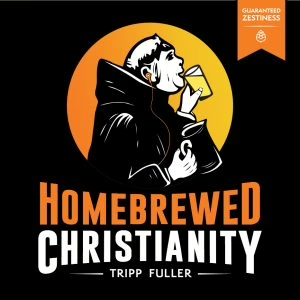Table of Contents
Introduction
This series is aimed to answer one question and then critique the outcomes along the way. The answer is Cheap Religion.
The question is why did Christians (mostly evangelical) vote for Donald Trump, and why do they support the Republican Party blindly?
This is going to be a journey, so you should strap in. There is too much to discuss for a singular post, so this will be a series. Having written up several parts of this series into a single document, there is no way to accomplish it in any post. So we are going to drip-feed it. There will be a new post every week until we finish.
The number one question I receive from outsiders to the faith, and even those within who disagree with MAGA and Trumpism, is why? This series will tell you why. Why do Christians who profess to follow Jesus and his way of love follow Trump and his way of hate?

Before I begin, this series would not have been possible without the tireless work of historians, philosophers, theologians, pastors, and preachers who have shared their work over the past decade. I want to highlight all those who have appeared on Homebrewed Christianity with Tripp Fuller. With their stories, I was able to piece together this oft-untold history. If I misquote, misplace, or forget you, please reach out because I would love to correct and get it right.
The second person I would like to highlight is Diana Butler Bass. Whether she agrees with this work or not (you can ask her), her love of Church history inspired me to learn more. I hope that you will learn more, too.
Cheap Religion
I will call this series Cheap Religion because it discusses how hundreds of millions of Christians’ religion was purchased cheaply and how cheap their religious commitment continues to appear. It is also a throwback to Dietrich Bonhoeffer and his idea of Cheap Grace, found in the Cost of Discipleship.
Historical America
To begin with, we must be honest with one another. My family has existed on this continent for about four centuries. We signed the Declaration, the Articles of Confederation, the Constitution, and the Secession Acts of the 13 Confederate States. I know my family history, so when I say something like America wasn’t a majority Christian nation until the 1950s, we should go with that (but you can check with Ryan Burge). All of those documents explicitly prohibit the United States of America or the Confederate States of America from becoming Christian.
The First Amendment of the United States Constitution establishes the separation of church and state through two clauses: the Establishment Clause and the Free Exercise Clause:
- Establishment Clause: Prohibits the government from establishing a religion or favoring one religion over another.
- Free Exercise Clause: Protects the right of citizens to practice their religion as they choose.
So, If you are a Christian Nationalist, then by definition of the above documents, you are a traitor to this country.
Where is God?
So, let’s be honest about where God stands in this country before discussing anything more modern. God is not, has not, and will never be (as long as the Constitution stands) at the center of this nation. The center is, was, and always will be the push-and-pull tension between the States and the Federal Government. And that government has never been Christian.
From my reading, even our founding fathers were barely a majority of Christians, and even then, it was to keep up pretenses, perhaps. Thomas Jefferson, for example, would be a modern-day atheist. He identified as Epicurean. Epicurus did not believe in any gods.
The next logical question
So then, why do so many Christians want to “return” the nation to a Christian state? That is the underlying story that guides the rest of this narrative. The story begins as so much of the modern world does in the aftermath of World War 2.
World War 2 and the beginning of the Cold War.
At the end of World War 2, two powers emerged: the USA and the Soviet Union. Their ideological differences were everywhere. It was how they ran their governments, spent money, worshipped, and what they thought a good life would be. The communist party existed and was growing by the end of the war, and the dropping of the atomic bombs further increased their intensity. The Soviets were communists. So, to prevent the American people from becoming ideologically Soviet, President Truman wrapped all the issues into one.

One of the stronger links between all American communists was atheism. So Truman, to oust communism from America, started a subtle policy to get all of America Religious. Eisenhower furthered this in his statement (bold mine):
“And this is how they [the Founding Fathers in 1776] explained those: “we hold that all men are endowed by their Creator…” not by the accident of their birth, not by the color of their skins or by anything else, but “all men are endowed by their Creator”. In other words, our form of government has no sense unless it is founded in a deeply felt religious faith, and I don’t care what it is. Of course, it is the Judeo-Christian concept, but it must be a religion with all men being created equal.”
Push to Cheap Religion in the 1950s
So, what were the options if the American Government wanted to make America religious?
- 1. Jewish — However, the Jews didn’t just accept everyone quickly and readily, nor did they have the infrastructure to accept literal millions of converts.
- 2. Islam — Islam, by design, has national interests. It was first called the Nation of Islam before becoming the Caliphates.
- 3. Christian — Christians had churches everywhere. The process of becoming a Christian was well-known. The nation had already been safeguarded from becoming Christian in the Constitution. The Christians had the infrastructure to handle the influx of millions of euphoric post-war people. Best of all, the Christians disagreed with each other, making it difficult to form a particular voting bloc.
The Christians make sense. So it was no surprise that a young, passionate, influential evangelist should receive the White House Seal of Approval by being invited there for the first time on July 14, 1950. Billy Graham would visit nearly every president until his death.
In the 1950s, America became religious for the first time to combat the communist ideologies that were tied to the Soviets. For the first time, Christianity had a foothold in the halls of power not as a personal faith held by individuals and their voting methods but as a primary religion of the United States of America.
And then the 1960s happened.
Please tune in next week because it’s going to get racially charged. But when we read next week, it will be obvious why the return to Christian America is often picked out as the 1950s because the 1960s would change everything radically.



